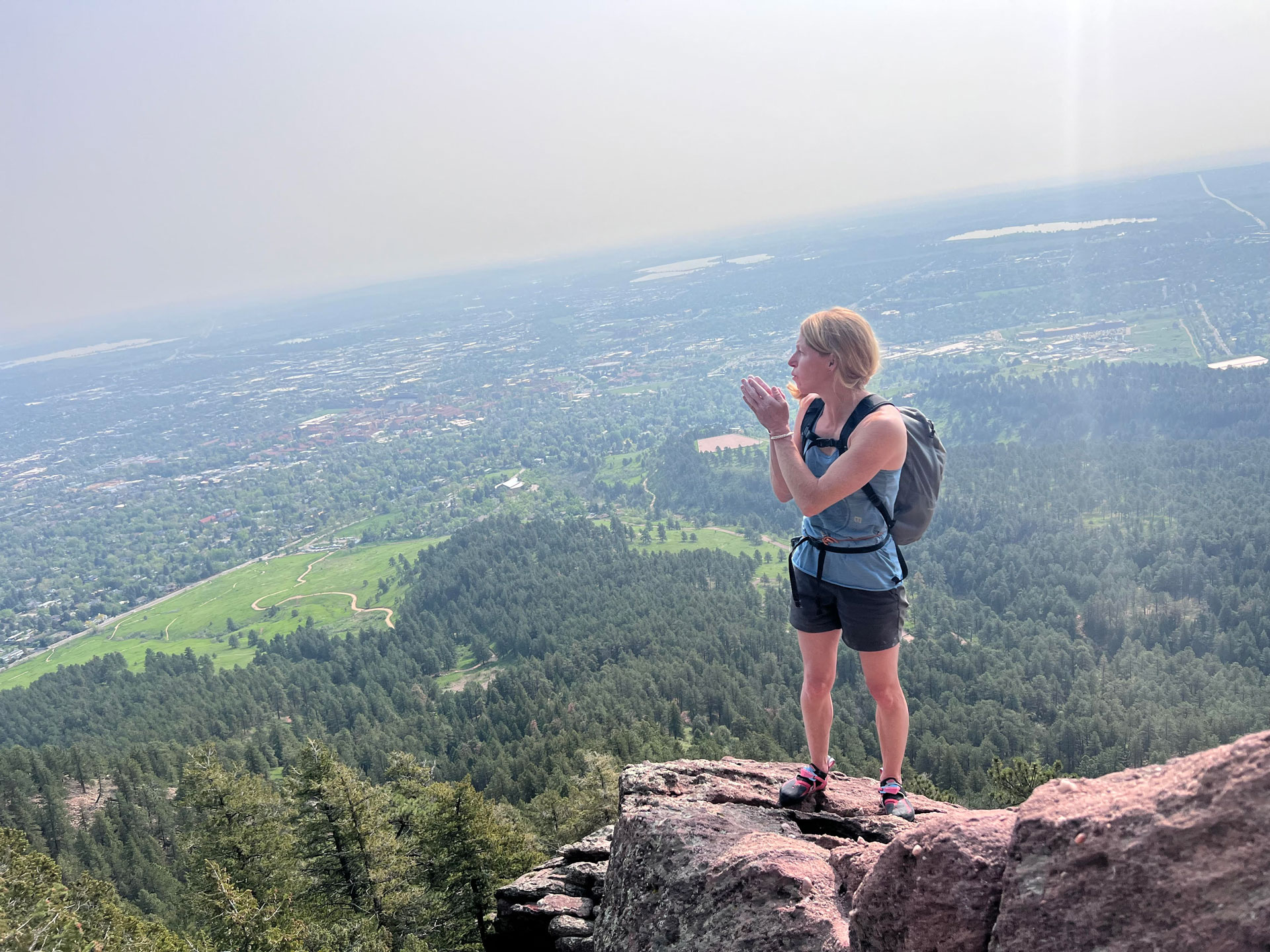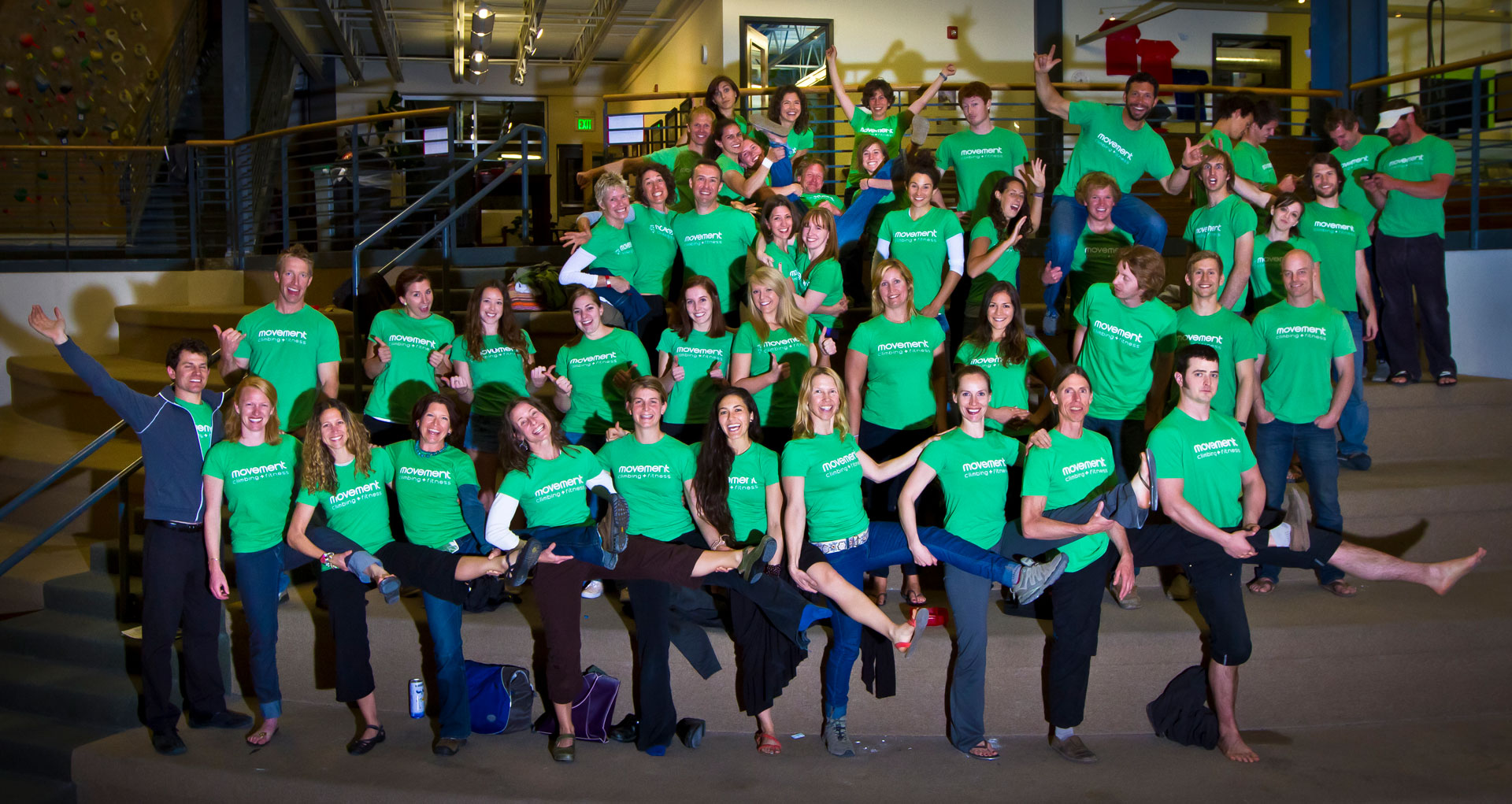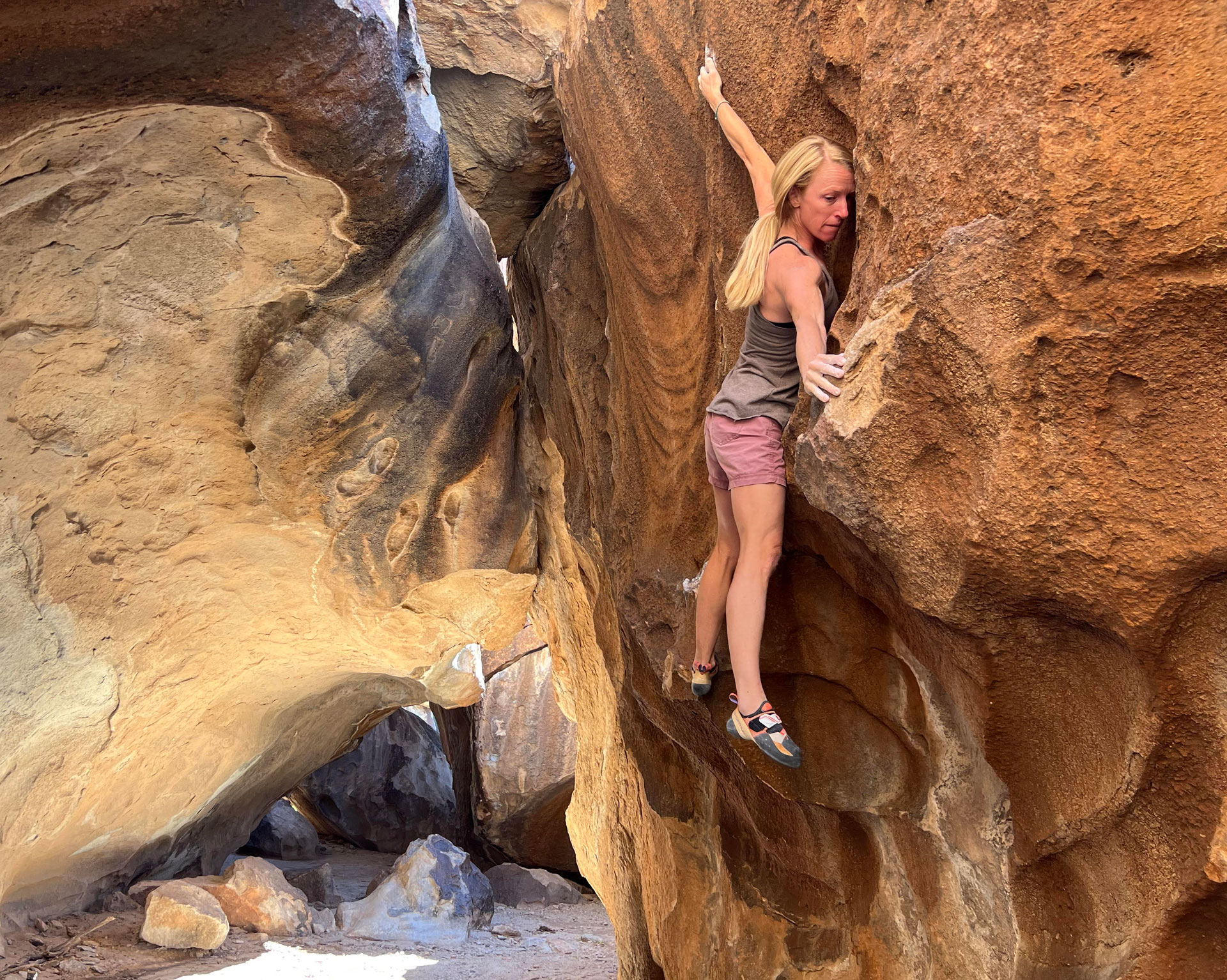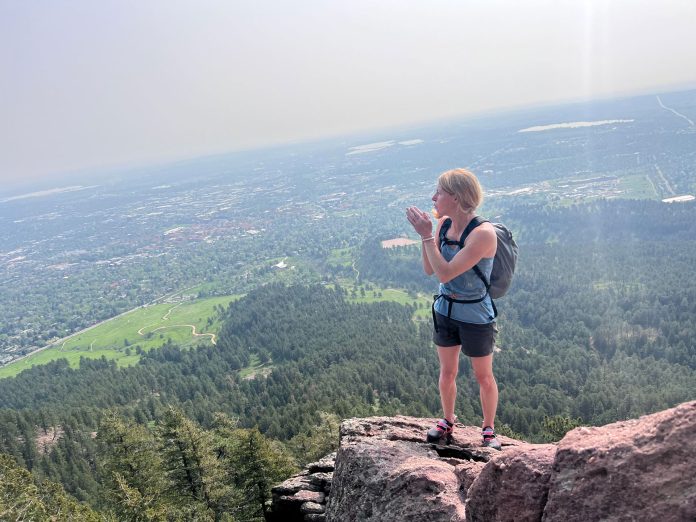
It was recently announced that Anne-Worley Moelter has replaced Jeremy Levitt as the CEO of Movement. Considering that Movement currently has 30 different facilities around the country, overseeing them all is a monumental task; it’s also a job that Moelter, who founded Movement with her husband, Mike Moelter, and served as Movement’s first CEO back in 2009, does not take lightly.
CBJ: What changes will come with you in the new position of CEO/leadership?
Anne-Worley Moelter: That is a great question, and I’m going to say the answer is “to be determined.” I say that because one of the biggest things is me getting into all of the gyms; over the next several months, I’ll actually be visiting all 30 Movement gyms. The gym here in Boulder is different from the gym in Golden, which is different from the gym on the East Coast, etc. So, I need to get in and see what the main theme is that ties us all together, and see what the differences are in the communities—which should be there, because we’re all different communities. And I need to make sure that we’re all rowing in the same direction, in terms of trying to be a truly great, enduring company that helps to lead the climbing and fitness industry.
Where is that balance point between wanting all the Movement facilities to be very similar—almost in the way that every McDonald’s kind of looks and feels the same—and wanting all the Movement facilities to be different from each other?
The balance is somewhere in the middle—and that is not a non-answer [laughs]. We’ve been doing some construction work on our Mission and Core Values and really taking a look at the company again and making sure those are aligned. Ideally, all the gyms are operating from that, from our Mission and Core Values, in pursuit of being a phenomenal organization. And they are also operating within the various communities—and so it’s important to honor who those communities are. The goal is that you would walk into a Movement and at its essence you would know that it’s a Movement facility, yet each one would have its own personal characteristics.
How much do you, as the new CEO, want to oversee things, as opposed to giving the autonomy to the individual gyms? I mean, are you a hands-on CEO?
I’m glad you asked that second part. ‘Hands-on?’ 110 percent! When Mike and I were with the legacy Movement gyms, we opened in 2009 and merged in 2019 and opened Boulder, Baker and RiNo, and up until the very last day before the merger, Mike and I were in the gyms every single day. We also set up what we thought was a great leadership team, and our leadership team is still involved at Movement now, which is amazing. We worked really hard to provide that leadership team with autonomy, and I believe it will be very similar. I want to know what it’s like to be in all of our gyms—that’s part of who I am. I want to have connections with as many people as possible, despite the sheer quantity of team members, members and gyms. Also, I want to help set the strategic direction of the company, but my goal is that all of the gyms will be provided with such a strong foundation and such solid systems that they can move forward and make autonomous decisions as they arise.
Aside from visiting all 30 gyms—which I don’t mean to imply as a small task—what else will being the new CEO entail?
To be perfectly honest, in the first couple of months, there’s going to be a lot of downloading of information and making sure I’m apprised of all the goings-on, and that I’m up to speed with what’s going on—not just in the gyms, but we have all of our various departments as well…routesetting and programs and marketing and retail. It really will be a lot of learning for me. And from there, I will start to work with the leadership team and various groups within the organization to set a clearer strategic direction for us over the coming years. That’s the goal.

It sounds like you’re approaching the CEO role as if it’s your first time, even though you’ve done it before. Of course, the industry is different now than it was when you were first the CEO of Movement.
Well, the great thing about never having left the industry and maintaining such strong relationships with people like Scott Rennak [Publisher of CBJ], or Marc Norman [CEO of USA Climbing], or pick your person…I feel like I have been involved and been part of all the changing trends. I’ve been observing what’s going on. So, that’s part of it. But you’re right, this is different than when Mike and I were doing it—Movement is literally 10 times the size than it was then. So, it feels a little bit like I graduated from college and now I’m going to get my master’s. So, there’s just a different mode of preparation for it. I think everything that I’ve learned and done, and the relationships that have been formed, will help. Those are the building blocks that will help launch us into the next phase.
How do you approach the concepts of quantity and expansion? The fact that there are 30 Movement gyms makes it unique to any other gym brand or gym network in the world. Another way of saying that is: Will there be a point where you say, ‘OK, there are now enough Movement gyms?’
The question about ‘enough gyms,’ that’s hard to answer. But the way I look at it is that, and the reason we opened the very first gym, the climbing industry has been so generous, in terms of the opportunity to meet incredible people and to bring people into what I believe is a phenomenal community. We now have a chance, as Movement, with 30 gyms, to do that in 30 different places in this country. And as long as we can continue to offer an outstanding experience to anyone who walks through our doors, I think we’re doing our job.

How much do you deliberate on being able to do that, being able to create a community, with a network of gyms that is ever-increasing?
It goes back to what I was saying about having a strong foundation and strong systems and a high-caliber Mission and Core Values. If a business can be built on those things, it really can grow—I mean, of course, there’s a tipping point for any business. But I believe if it’s founded on those things, you can continue to grow and offer best-in-class experiences. When you have those things in place, it just emanates throughout the organization, through all of the people who are involved. If you’re all on the same page, the hope is that 10/10 times you’ll get it right. Things can fall apart when they get bigger, but in our case, I think there’s still such a sense of solidarity; my hope is that by continuing to build on that foundation, we will continue to maintain the feeling of familiarity when people walk into our gyms. Often we talk about Movement being their ‘third place,’ or Cheers—for those of us that are old enough to remember it [laughs]. You walk in and ‘everybody knows your name.’ Our industry is so lucky to have facilities that offer that, and I’m sure if we went out and polled all the members in all the gyms, so many would say, “I met my best friend here,” or, “I met my life partner here,” or, “When I was going through a hard time, this was the community that supported me.” I think that’s such a unique and amazing attribute to what we do. My hope is that we can continue to instill that in folks who join Movement, regardless of how many gyms we have.
Yes, good points—I think there can be a strength to quantity, if there’s quality control. If the values are the same across all facilities, customers know they can go into one of the facilities anywhere in the country and get a positive experience.
Yes, and honestly, that’s something I hope to do, to dispel the rumor that Movement is this giant—I don’t know the right adjective, I’ll say “giant corporate entity” because a lot of people see that in a negative light. But actually, in our company, the majority of our leadership team comes from this industry. We care deeply about this industry and about who Movement is. So, I want people to see that in the things that we’re trying to do and in the partnerships that we’re trying to form. I wouldn’t have said ‘Yes’ to this [CEO] role if I didn’t wholeheartedly believe that Movement is an incredible organization.
How do you dispel those negative thoughts of Movement being a ‘giant corporate entity?’ That’s a big challenge, right, because climbing has long had a spirit of ‘anti-corporate’ counterculture?
Just being real, there are always going to be people that prefer the one-off “mom and pop” [climbing gyms], and there is absolutely nothing wrong with that. And I would say that as a larger company, we do have to have systems in place that are highly organized and can be used by 30 different facilities in the country. My hope is that people, team members, members and guests come and experience what it is like to be in a Movement facility—to really see who we are before they pass judgment. I strongly believe if anyone comes into our gyms, they will see we are committed to the communities. I’m here in Colorado, and I’ll be working in the Colorado gyms every single week because I want to, because that’s where the action is and that’s where community is. I’m hopeful that people will see that we really are climbing, yoga and fitness at our core.
There are a lot of hot-button issues at the forefront of the industry, from routesetter pay and compensation to gym access and affordability…among others. Which issues do you feel are most pressing for the industry, on the whole, right now?
It would be really hard for me to pick just one or a couple, but I think the most important thing is conversation and communication within our industry, and people being open to having conversations about any of the hot-button topics. Truly, when you look at it, our industry is still quite small. We have grown leaps and bounds over the past couple of decades, but when you look at other sports and health and wellness industries, we’re small, and a lot of us know each other. The only way we’re going to grow better as we grow bigger is if we all try and work together. I’m not saying that everyone will agree on the same things. But I do believe that we all have to be open to discussions that may not always be comfortable, and we might have a lot of varying opinions on things; it’s important that we talk about them so we can collectively try to reach solutions.
Has the industry done a good job of facilitating conversations and communication?
I’ll say that it has gotten a lot better. What the CWA has been able to do, in terms of growing their Summit, and I know USA Climbing has been using a lot of different conversation forums and formats…and within the gym industry itself, a lot of owners are reaching out more and more, which is fantastic. I think we have come a long way. Like in any industry, there’s room for improvement. But what I see as really promising is that I look around our industry and I see some really amazing people. If we have that combination of people who keep coming to the table, then we can only go up from here. I have so much admiration for what our industry has already been able to do, and it’s kind of like we know no bounds.

As a final question, what’s your go-to gym routine?
I’ll give you a week at a glance; I have to look at it from that perspective because every day is a little different. But I actually have a climbing partner with whom I have been climbing for 22 years, and we have a power-hour every week because we’re both working moms. So, for 22 years, we’ve done that almost every week of every year. So, I do that, and I like to get in at least one yoga class a week, and on top of that, if I’m able to get in and do a solo bouldering session, that would be a really great week for me. Anything beyond that is fantastic, but time constraints sometimes don’t allow for it. And then there’s a fitness class that I do two times a week as well. So, it’s a little sprinkling of everything.
You really live all the diverse offerings and amenities of Movement!
Well, working with our team, I’m hoping we can all be open when we think about vision and strategy. We want to maintain the soul of who we are, but we also want to be able to grow and evolve. So, it’s a combination—the climbing, yoga and fitness. On a very personal level, I think doing all three of those things is important.

John Burgman is the author of High Drama, a book that chronicles the history of American competition climbing. He is a Fulbright journalism grant recipient and a former magazine editor. He holds a master’s degree from New York University and bachelor’s degree from Miami University. In addition to writing, he coaches a youth bouldering team. Follow him on Twitter @John_Burgman and Instagram @jbclimbs. Read our interview Meet John Burgman, U.S. Comp Climbing’s Top Journalist.









